Kenya is a nation blessed with natural beauty and diverse wildlife. It has long been at the forefront of wildlife conservation efforts. Its rich ecosystems and iconic national parks like Maasai Mara and Amboseli, have become safe places for a wide range of rare species. Through the dedicated work of conservation bodies and local tribes, Kenya has set an inspiring example for the world in preserving its wildlife. But the human wildlife conflict in Kenya still persists.
There are five invaluable lessons that we can learn from wildlife conservation in Kenya, which sheds light on the importance of protecting our planet’s biodiversity. It also offers valuable insights into sustainable co-existence between humans and wildlife. From community engagement to unique conservation strategies, these lessons are a must for successful wildlife conservation in Kenya. Planning the best staycation in Nairobi? Looking for places to go in Nairobi? Click below.
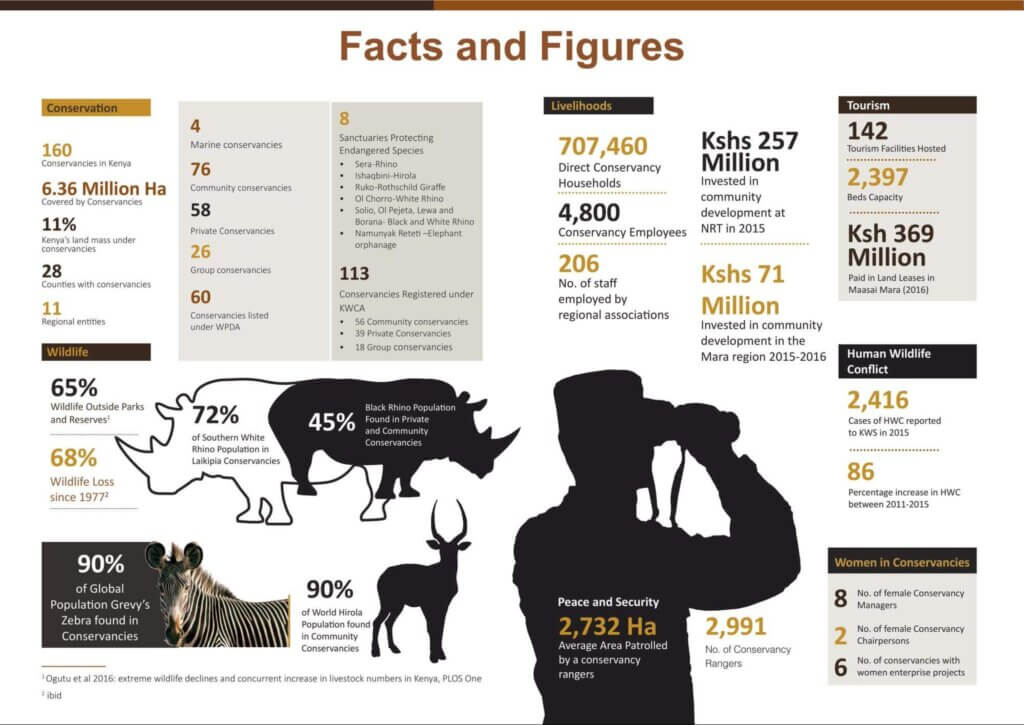
Image credit – The Safari & Conservation Co./Twitter
Key Facts
1. There are about 160 conservancies in Kenya.
2. 6.36 million Ha is covered by conservancies.
3. 11% of Kenya’s land mass is under conservancies.
4. 90% of global Grevy’s Zebra are found in conservancies.
5. 45% of Black Rhinos are found in Private and Community conservancies.
6. 72% of Southern White Rhinos are found in Laikipia conservancies.
What Do You Learn from Wildlife Conservation in Kenya?
Kenya’s wildlife is famous worldwide. Elephants, cheetahs, rhinos, zebras, and baboons are just a few of the animals that live in the nation’s diverse and stunning ecosystems. Though many of these species are endangered or vulnerable, Kenya has adopted a fresh approach to wildlife conservation as a result.
The risks that these animals face include habitat loss, poaching, contact with people, and other factors. Kenya’s government and many other groups are trying to address these problems and preserve wildlife. And they just unveiled a new plan for wildlife protection. Kenya’s conservation efforts are far from flawless, but the country has made strides in protecting its ecosystems and animals. In fact, there are some lessons to be learned from strategies for wildlife conservation in Kenya.
[Suggested Read: 7 Facts: Uhuru Gardens National Monument & Museum in Nairobi]
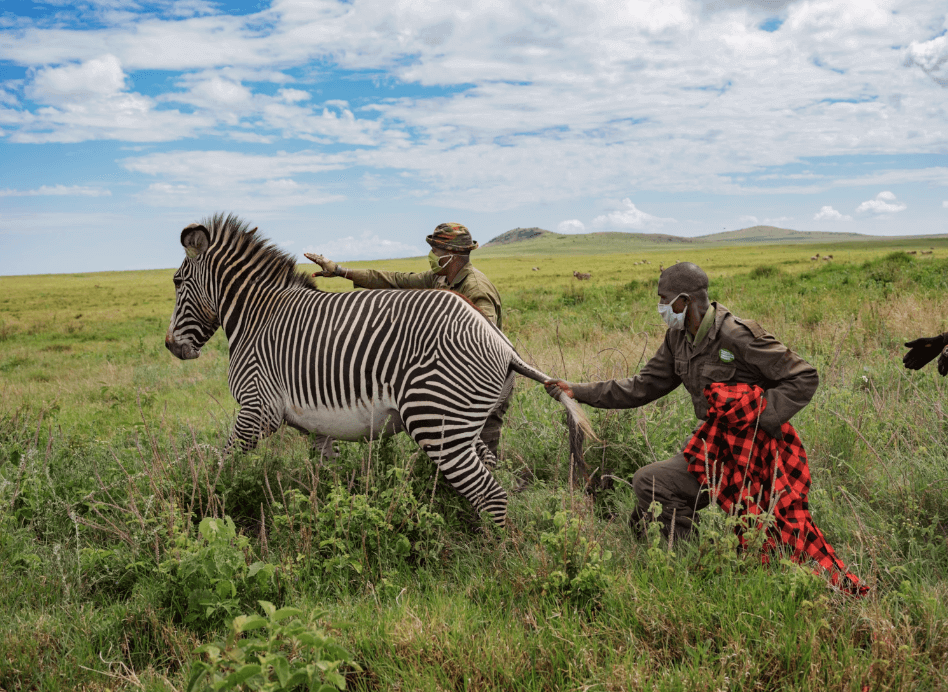
Image credit – National Geographic
1. Take into account both wildlife and human needs
The fact that Kenya’s strategy takes into account the needs of both the animals and humans involved is one feature that has led to its success. The program’s main drivers include the well-being of animals, saving the ecosystems, and economic benefits. Kenya has a sizable ecotourism industry that boosts the nation’s economy and raises the standard of living for its citizens.
Kenyan people are aware that their wildlife and tourism in Kenya will suffer if lions and rhinos go extinct. Wildlife conservation in Kenya places a strong focus on how program goals will benefit local companies, local citizens, animals, and the planet all at the same time
2. Cooperation is key
Fostering more cooperation between many government bodies is one more aspect of Kenya’s approach to protecting wildlife. Cooperation with researchers and other governments is beneficial as well.
By working with the US Department of the Interior and the US Agency for International Development to fund its conservation strategy, Kenya has already taken the first steps in this direction. The Kenyan government has also started taking action against wildlife workers who support poachers. Unifying and organizing the effort will increase the success of wildlife conservation in Kenya.
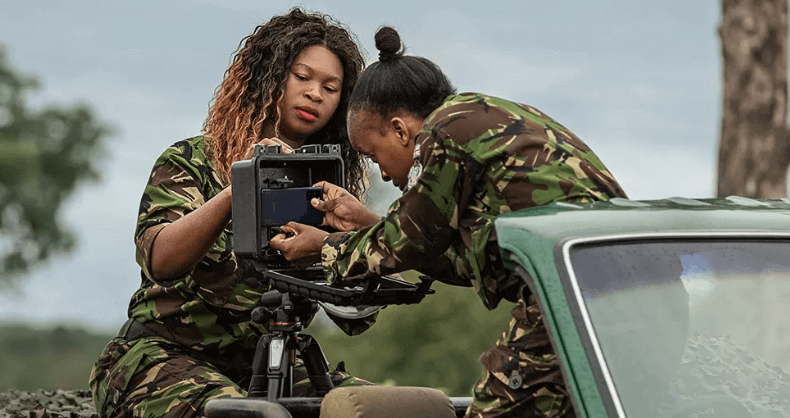
Image credit – https://www.bbc.com/
3. Use Tech
Kenya is also using tech to increase the efficiency of its wildlife conservation in Kenya. Experts just completed an airborne census of the numbers of elephants and buffalos. To monitor animal numbers and potential poachers, they deploy drones as well.
Conservationists can conduct a fast and reliable survey of more land using modern tech. They are also safe since they are not forced to travel into the wild. Where they can encounter poachers, dangerous animals, and other hazards.
4. Engage with the local tribes
Most of Africa, as well as other regions of Europe and Asia, used to be home to the African lion. Since then, the number of African lions has decreased, from up to 200,000 wild lions in Africa a century ago to only around 24,000 now. As a result, the historic range of the African lion has been reduced to only around 8% of its present size.
As part of its strategy, Kenya encourages local tribes to take an active part in wildlife conservation in Kenya. The Maasai people of Kenya reside close to the nation’s game lands and wildlife parks. Men hunt lions when they first become warriors in Maasai culture. As a result, lions started to decline. The Maasai Olympics featured games that require many of the skills needed for lion hunting.
These were developed by the African Wildlife Foundation, Maasai leaders, and other local partners as opposed to lion hunting. In fact, some Maasai people work for conservation programs. These programs involve and help locals and advance conservation efforts.
5. Take an integrated approach
Kenya has taken into account many factors that have an impact on wildlife protection. The success of this integrated strategy has been a major factor. Kenya is not just combating poaching. It is also battling wildlife staff who aid poachers. Kenya has been working with local tribes and building government agency unity. It also works to protect animal habitats, which pose a serious threat to wildlife. Kenya also supports tribes in learning about the value of wildlife, changing customs that harm wildlife, and protecting livestock from wild predators.
Wildlife conservation in Kenya doesn’t just focus on the benefits for the ecosystem, the earth, or the animals. It shows the benefits for the target audience. Kenya has a long way to go when it comes to wildlife protection. But there are many lessons that other nations can take up from its work. To protect their own species, they can start adopting Kenya’s best practices after observing what worked and what didn’t. Kenya is home to an amazing and varied wildlife. The world is now hopeful that its varied plan can still save them.
Kenya has lost over 44% of its large mammal species during the past 17 years, despite major global help and massive conservation efforts. But hope is still there and Kenya does get points for trying.
[Suggested Read: 9 Reasons to Add a Visit to Nairobi to Your Bucket List]
Top 4 Females Who Work Towards Wildlife Conservation in Kenya & Tanzania
Wildlife conservation in Kenya is important now more than ever. And these inspiring women have proven that there’s nothing a person can’t achieve with passion and patience.
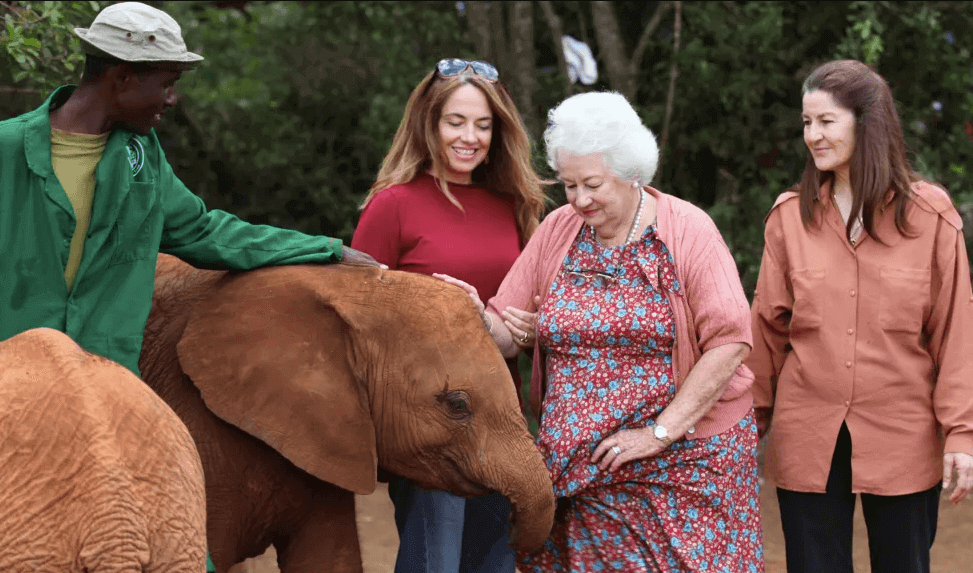
Image credit – David Sheldrick Wildlife Trust
1. Daphne Sheldrick
Daphne Sheldrick is an animal activist who was born in Kenya and has spent the last 25 years residing and working in the Nairobi National Park. She founded the David Sheldrick Wildlife Trust in 1977 to aid in the protection of orphaned animals after the death of her husband, naturalist David Sheldrick.
Dr. Sheldrick was raised on a lovely farm in the Rift Valley among domestic and wild animals. Her passion for animals drew her to The Orphans Project’s unique work. This well-known program adopts orphaned rhinos and elephants who have been the victims of poaching and rehabilitates them with love and care.
Sheldrick, who is known for being the foster mother to these helpless infants, has mastered the milk formula and the required husbandry. She is now known as a global expert on the care of wild animals. After recovery, these creatures are released back into the wild. The David Sheldrick Wildlife Trust has nurtured more than 150 baby elephants by hand since its founding.
Sheldrick has written many articles and books in addition to an autobiography, Love, Life, and Elephants: An African Love Story. She continues to speak at events and appears on TV to discuss the trust’s work altering people’s lives.
Her work with elephants is documented in the BBC documentary Elephant Diaries and the movie Born to be Wild. Queen Elizabeth II promoted Dr. Sheldrick to Dame Commander of the Order of the British Empire in the 2006 New Year’s Honours List. She has taken immense measures for wildlife conservation in Kenya.
2. Dr. Paula Kahumbu
Dr. Paula Kahumbu is in charge of the “Hands off Our Elephants Campaign” in Kenya as the CEO of the conservation NGO Wildlife Direct in Kenya. With support from the nation’s First Lady, Margaret Kenyatta, the high-profile campaign started in 2013. It has been a great help for wildlife conservation in Kenya.
Through behavioral shifts among rural tribes and decision-makers, it seeks to reclaim the country’s leadership in elephant conservation. The program’s use of media coverage to mobilize the public as animal rights activists and the creation of an anonymous hotline for reporting wildlife crime are two key elements of how it works.
Dr. Kahumbu is also a skilled novelist. She co-wrote Owen and Mzee: The True Story of a Remarkable Friendship, a best-selling non-fiction book about a hippo and a tortoise.
3. Dr. Leela Hazzah
Dr. Leela Hazzah, 37, an Egyptian native, was not raised around lions because they were long since extinct in her home country. However, she was motivated to pursue a career in conservation biology by her early exposure to tales about roaring lions.
She founded the non-profit Lion Guardians in East Africa in 2007 to aid in preserving the jungle’s rulers. At first, the Amboseli-Tsavo ecosystem had only five guardians working in a restricted region. Since then, it has grown to 65 guardians, spanning one million acres across Kenya and Tanzania.
To know the Maasai people’s bond with the majestic animals and the reasons they were being murdered, Dr. Hazzah spent a year living among them. The Maasai’s bond with their livestock, which often turn into prey for lions, was the basis of the issue. By showing the benefits of lion conservation and its value to culture and tourism, the non-profit has begun to work with the tribe to rescue the lions.
The NPO helped in reducing the human-animal conflict in Kenya and Tanzania over the previous ten years. As a result, there are signs that the lions are recovering. She can now hear the lions’ roars, which she had never heard before. Now that is called wildlife conservation in Kenya.
Lion Guardians won the Future for Nature Award in 2014. It aired on Sir David Attenborough’s BBC program, Africa. In the same year, Dr. Hazzah had been honored as a CNN Hero.
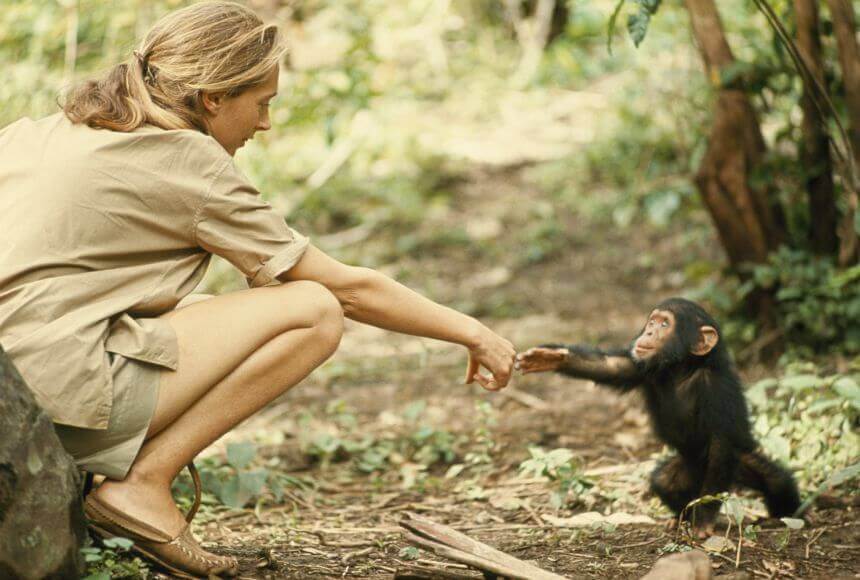
Image credit – National Geographic
4. Dr. Jane Goodall
Dr. Jane Goodall, a well-known chimpanzee expert has spent more than 55 years studying and protecting these giant apes in Tanzania’s Gombe Stream National Park.
Goodall faced a lot of criticism in the early stages of her career since she was a rare female in a male-dominated scientific field. Experts asked why she interacted with the chimpanzees she examined rather than just serving as a passive spectator and giving them names. Her work forever changed how we perceive primates and human history.
Dr. Goodall founded the Jane Goodall Institute in 1977 to aid in the conservation of chimpanzee habitats and to fund her Gombe research. The institute is renowned across Africa for its cutting-edge community-based programs.
Dr. Goodall also uses her expertise to better the lives of zoo animals and lab chimpanzees. She continues to travel the globe as a United Nations Messenger of Peace. She spends 300 days a year on average educating people and spreading awareness about chimpanzees. Do you want to know more about wildlife conservation in Kenya or top hotels in Nairobi? Keep reading.
Stay at Ole Sereni in Nairobi to Experience Wildlife Conservation in Kenya

If you’re looking for an unforgettable getaway look no further than Ole Sereni in Nairobi Kenya. Nestled amidst the beauty of Kenya’s vibrant capital, it is one of the best Nairobi 4 star hotels. It offers unique experiences and stunning views of the wildlife near the waterhole in Nairobi National Park. It is one of the best award-winning hotels near Wilson Airport Nairobi.
It is also one of the best hotels near JKIA via the Nairobi Expressway. Worried about the Nairobi weather? Nairobi is the coldest in July. The lowest Nairobi temperature ever recorded is 2.8 °C in July 2002. Nairobi weather today is partly sunny in the afternoon. Cloudy with clear breaks in the evening with more clouds overnight. The Nairobi population in 2023 is 5,325,000, a 4.02% increase from 2022.

Why is Nairobi so cold? Because of its high altitude location. To warm you, we have a range of 106 Cozy Rooms, 26 Club Rooms, and 2 Wow Suites, each with modern facilities like satellite Tv, Wi-Fi, and more. You’ll find yourself in a haven of comfort and elegance.
Relax at the serene Duma Salon & Spa and experience the best massage in Nairobi. Where expert therapists will rejuvenate your body and mind. Searching for the best swimming pools in Nairobi? Take a dip in our heated swimming pool. Where the soothing waters will transport you to a state of bliss. And for those seeking to continue their workout routine, our fully equipped gym awaits, ready to help you break a sweat.
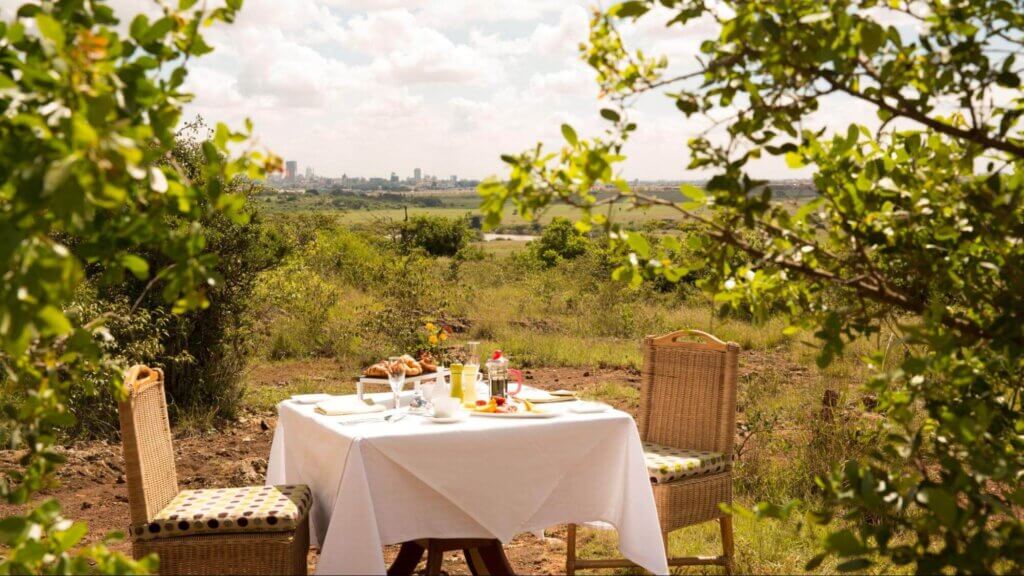
Finding the best places to eat in Nairobi? Prepare your taste buds for an amazing culinary journey at Ole Sereni. Where dining is elevated to an art form. Led by the famous Chef Torsten Schubert and his team of skilled chefs. Our Nairobi restaurants and bars offer global cuisine, rich local flavors, and savory cocktails. Each of our dining options is set against the backdrop of the iconic Nairobi National Park.

At Ngong Pool Bar (one of the best bars in Nairobi), sip on hand-crafted cocktails while taking in breathtaking views of the Nairobi skyline and the park’s stunning wildlife. Eagle’s The Steakhouse is a haven for meat lovers and one of the best places to visit in Nairobi for couples. Where prime cuts of aged steaks and fresh seafood are prepared to perfection. The Big Five Restaurant (one of the best outdoor restaurants in Nairobi) is an ode to the flavors of India. Where aromatic spices and authentic recipes transport you to the streets of Mumbai or Delhi. And for a quick bite or a casual meal, Waterhole Snack Bar offers a range of sandwiches that will satisfy any craving. You can also opt for in-room dining.

Looking for conference facilities in Nairobi? It is popular as one of the leading wedding venues and conference hotels in Nairobi. Located close to both the airport and Nairobi CBD, our hotel provides is ideal for your next conference, grand wedding, or intimate gathering. Unable to find birthday venues in Nairobi? Our beautiful event spaces and meeting rooms in Nairobi are designed to accommodate various types of events, offering versatility to suit your specific needs.

From cutting-edge tech to exquisite decor, we provide the latest amenities and unmatched attention to detail. It will create an unforgettable experience for you and your guests. Whether you’re lounging by the pool, enjoying an intimate gathering in the wild, or even in the comfort of your own home, our outdoor catering services are designed to elevate your culinary journey to new heights. We deliver exotic flavors and services right to your table. Our skilled chefs and attentive staff curate personalized menus.
Searching for interesting places to visit in Nairobi? We can arrange a trip to Amboseli National Park, Lake Nakuru National Park, Aberdare National Park, Nairobi Animal Orphanage, and more for a holistic wildlife experience. Here, you’ll get the chance to witness the incredible efforts being made to protect Kenya’s diverse wildlife. We help local conservation efforts and tribes. We are also committed to preserving Kenya’s natural heritage for years to come.
As you indulge in our hotel amenities and hospitality, you’ll also have the chance to take part in education programs. Embark on a thrilling Kenya wildlife safari in Nairobi National Park. Where you can witness the awe-inspiring beauty of giraffes, zebras, and other majestic creatures in their natural habitats.
We help you know the delicate balance between human growth and nature preservation. By staying at Ole Sereni, you become a part of this noble cause, give back to the community, and help with wildlife conservation in Kenya.
So, whether you’re a nature lover, a wildlife advocate, or just seeking an adventure, Ole Sereni in Nairobi City is perfect. Excited about visiting places in Nairobi? Your stay will leave you with cherished memories and a profound value for the wildlife that calls Kenya home. Then you can travel from Nairobi to Mombasa.




